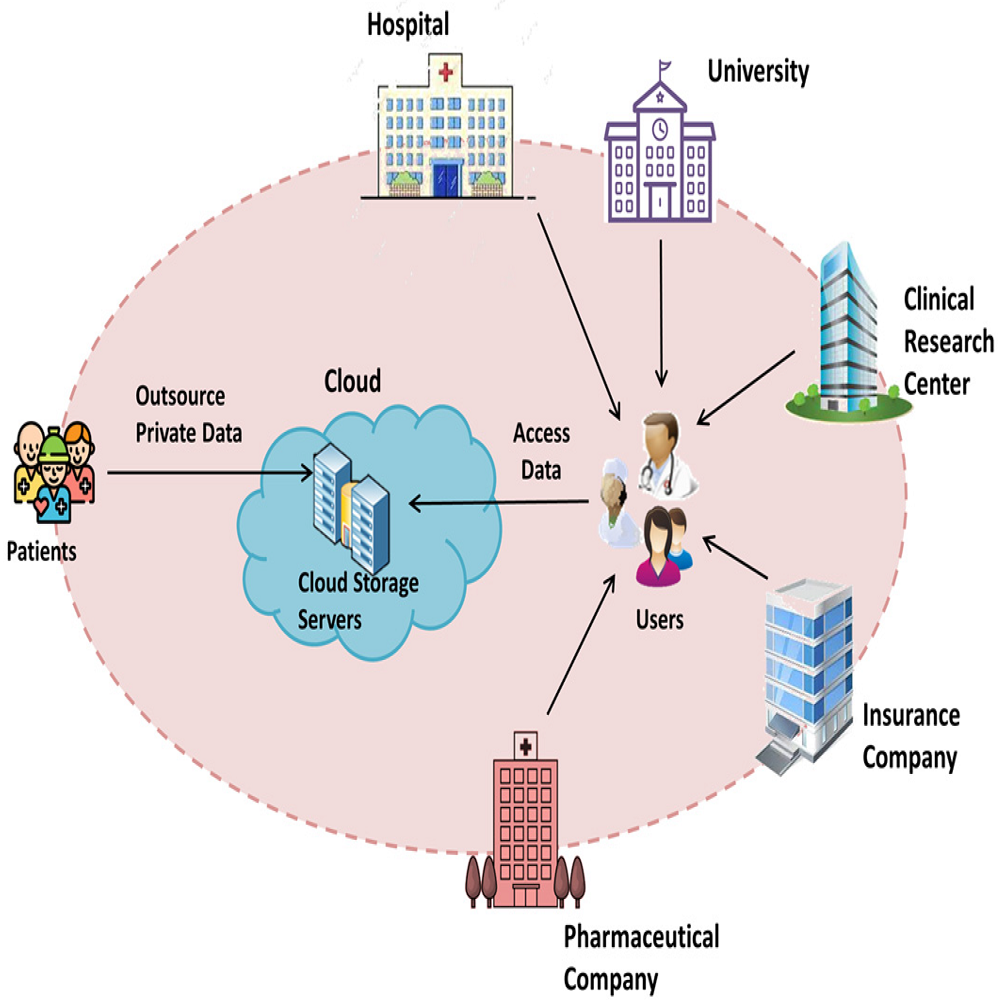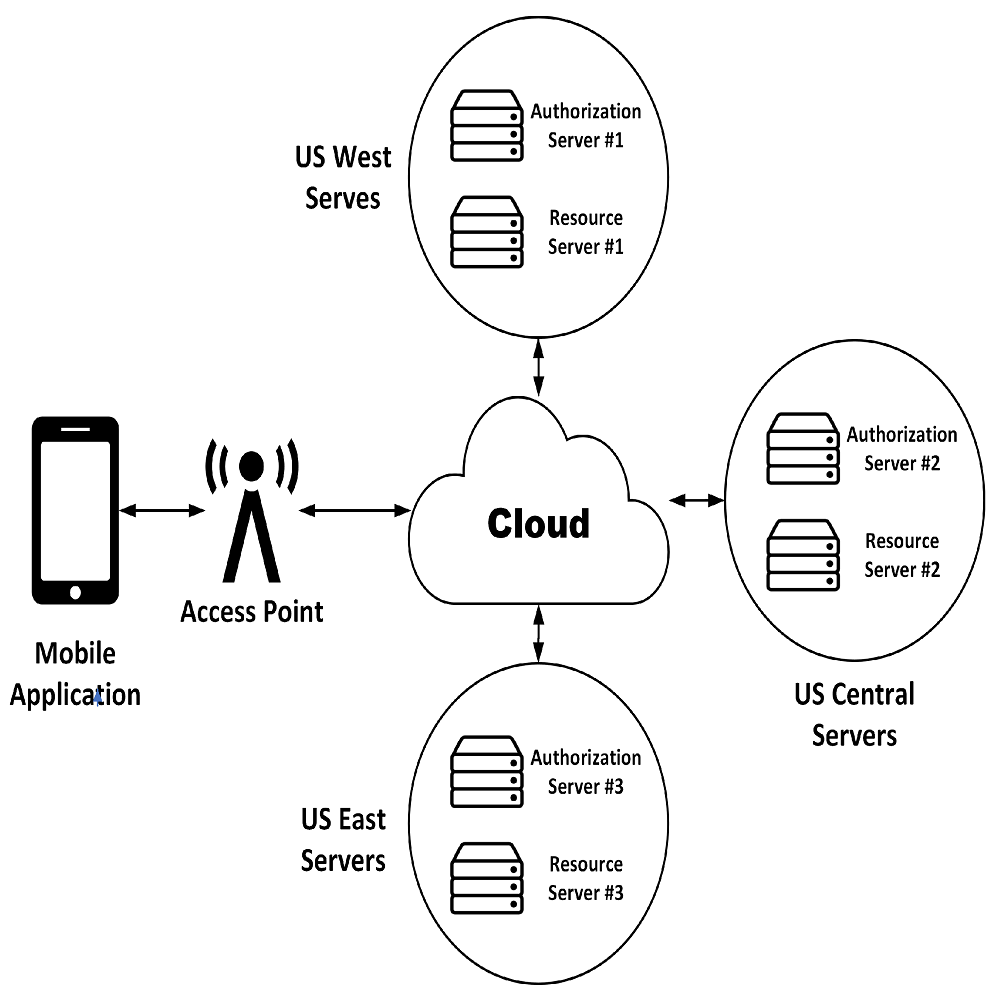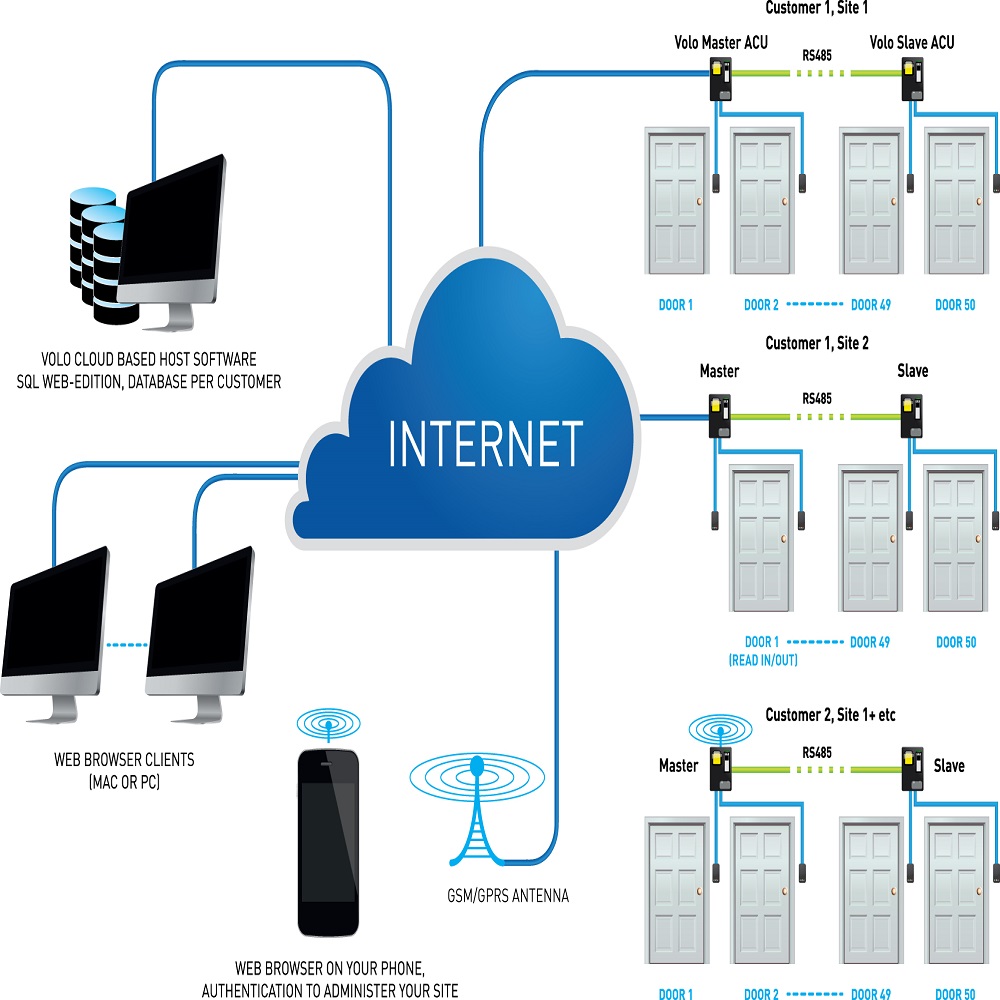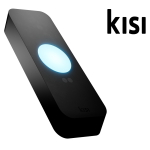Introduction to Cloud-Based Access Control
Emerging as a powerful solution, cloud-based access control marks a leap in security management. It merges the robustness of access control with the agility and reach of cloud computing. This innovative approach overhauls traditional security measures by harnessing the cloud’s potency. This means any company can manage access points with the simplicity and accessibility of any internet-enabled device.
Benefits of a Cloud-Based Approach
Why opt for a cloud-based system? Let’s look at some clear benefits:
- Ease of Access: Admins can adjust settings from anywhere, using any connected device.
- Cost Reduction: It lowers initial investment by eliminating the need for on-site servers.
- Scale with Ease: Businesses can add new doors or users to the system without major hassle.
- Automatic Updates: Software upgrades happen in the background, keeping systems current.
- Security Enhancements: Real-time alarms and lockdown features can significantly bolster security.
These are just a few advantages that underline the effectiveness of such a system in today’s dynamic business landscape.

Evolution from Traditional to Cloud-Based Systems
Here’s a glance at how systems have evolved:
- Traditional access control relied on physical hardware and on-premise servers. It limited remote management capabilities and often required on-site staff for operation.
- High upfront investments were the norm, thus smaller businesses often found such systems out of reach.
- Migrating to a cloud-based system translates to a shift from capital expenses to operational ones, offering scalable and cost-effective solutions without sacrificing the security envelope.
- The evolution centers on giving companies the flexibility to respond to security events in real-time, regardless of location, driving efficiency, and ultimately, peace of mind.
Key Features of Cloud-Based Access Control Systems
Cloud-based access control systems come packed with features that streamline security processes.
Remote Management and Monitoring
These systems let admins manage security settings from any location.
Real-Time Updates and Diagnostics
They update software on their own and give instant reports on system health.
Integrated Security Features
The systems combine multiple security tasks into one, for tighter control.
Scalability and Flexibility
They grow with your business and adapt to changing security needs with ease.
Comparing Cloud-Based and Traditional Access Control
The transition from traditional to cloud-based systems often hinges on cost and flexibility factors.
Cost-Efficiency and ROI
Cloud-based access control stands out for its cost-efficiency. Traditional systems require significant upfront investment for hardware. Cloud systems convert those into operational expenses, with savings on maintenance and upgrades. Over time, the return on investment (ROI) with cloud access control often outweighs traditional systems.
Integration with Other Systems
A major advantage of cloud-based systems is how well they integrate. They link with other digital resources like HR databases, video surveillance, and HVAC. Traditional access remains isolated and harder to sync with other tech.
User Experience and Convenience
Ease of use greatly improves with cloud access systems. Users can open doors and manage access from anywhere. Traditional systems usually demand in-person updates and lack remote capabilities. The cloud offers a smoother, more user-friendly experience.

Choosing the Right Cloud-Based Access Control Provider
Selecting a provider is critical for success. Look for reputable services with a broad range of functionalities.
Assessing Provider Reputation and Service Scope
Do thorough research on providers. Read reviews and analyze their service scope before choosing.
Compatibility and Customization
Ensure the provider’s system is compatible with your existing hardware. It should also support customization to fit your needs.
Data Security and Compliance
Choose a provider that prioritizes data security and meets compliance standards. This is essential for protecting your business.
The Advantages of Moving to Cloud-Based Access Control
The switch to cloud-based access control systems offers undeniable benefits for businesses. From scalability to improved security, the advantages are clear and compelling. In this section, we’ll delve into the reasons why moving to the cloud can enhance your business operations.
Flexibility and Scalability for Businesses
Cloud-based access control systems shine in their ability to grow with your business. You can easily add new users or doors as your company expands. There’s no need for complex hardware installations. Adjust your settings anytime, anywhere, with just a couple of clicks. This level of flexibility is a game-changer, making it simpler to scale up or down based on your needs.
Enhanced Security and Real-Time Control
With real-time updates and control, cloud access systems offer top-notch security. You can respond to threats as they happen, from any location. Say goodbye to lag in security response. Lockdown systems or update permissions in an instant. Alerts and updates come straight to your device, so you’re always in the know.
Streamlining Access for Employees and Visitors
Cloud-based systems also make access smoother for users. Employees and visitors enjoy a seamless entry experience. Admins manage permissions without any physical hassle. Imagine the convenience of updating access rights on-the-go. Streamlining access not only enhances user experience but also boosts operational efficiency. It’s a win-win for all involved.

Case Studies and Success Stories
In today’s tech-driven world, cloud based access control systems are transforming businesses. This section highlights real-world cases where companies have seen measurable improvements post-transition.
Businesses That Benefited from the Transition
Many businesses have seen success after adopting cloud solutions. Here are a few highlights:
- A tech startup scaled quickly, adding doors and users effortlessly.
- A retail chain integrated access control with their HR system, saving time.
- A law firm enhanced security, controlling entry points from anywhere in real-time.
These stories not only showcase the efficiency of cloud based access control systems but also their ability to meet diverse business needs.
Improvements in Security and Efficiency
The transition to cloud access control often leads to significant security and efficiency benefits:
- Companies report faster responses to security threats and breaches.
- Access control data syncing with other digital resources streamlined operations.
- Real-time management capabilities led to reduced security staff workload.
By sharing these success stories, we can see the impact of cloud based access control on different business landscapes and how it fosters a more secure and efficient environment.
Future of Access Control
The future of access control is closely intertwined with advancements in technology. As businesses seek more efficient and secure ways to manage entry to their facilities, cloud-based access systems continue to evolve, welcoming innovations that promise to redefine security management.
Innovations in Cloud-Based Technologies
Innovations in cloud-based technologies are pushing the boundaries of what access control systems can do. Upcoming trends include the use of big data analytics to enhance security protocols, the integration of IoT devices for smarter control, and the development of more intuitive user interfaces that simplify administration. These advancements aim to increase the adaptability of access control systems to a variety of environments while maintaining high security standards.
The Role of AI and Machine Learning
AI and machine learning are playing an increasing role in access control. These technologies can predict potential security breaches by analyzing patterns and anomalies in access data. They could also automate responses to security threats, improving reaction times. Additionally, AI-driven systems may soon handle routine tasks like managing user credentials and scheduling access, reducing the workload on human administrators.
Predictions for Access Control Evolution
The evolution of access control is likely to be marked by a shift towards more predictive and proactive security measures. It is anticipated that systems will become more self-reliant with AI capabilities, thus offering enhanced decision-making based on real-time data. A greater emphasis on user experience is also expected, with systems becoming more seamless and less intrusive for legitimate users. Overall, the future looks bright for cloud based access control, transforming it into an indispensable tool for modern security management.


